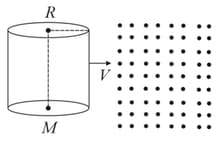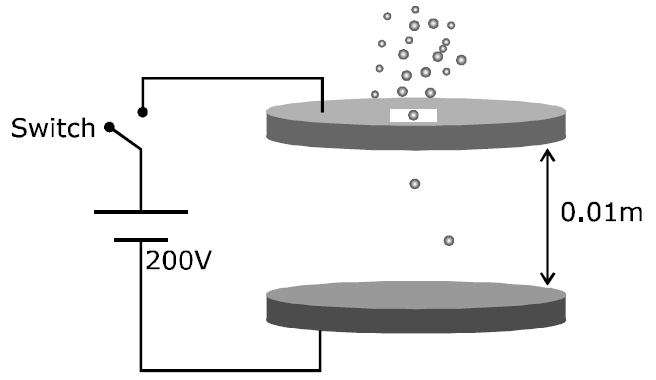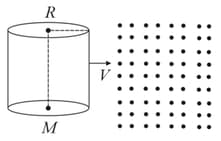Stoke’s Law
Stoke’s Law: Overview
This topic covers concepts such as Stokes Law, Viscous Force on Spherical Bodies, Velocity of Spherical Ball in Viscous Medium, Terminal Velocity of Spherical Ball, Applications of Stokes Law, Velocity of Rain Drops, etc.
Important Questions on Stoke’s Law
A spherical ball of radius and density falls freely under gravity through a distance before entering a tank of water. If after entering the water the velocity of the ball does not change, find . The viscosity of water is .
A parachute descend slowly because it has a _____ surface area coming down fast.
With the parachute out it adds more friction slowing him down because air resistance works against the very large surface area of the parachute.
A raindrop falling in air is similar to motion of what kind of body in viscous medium?
Stoke's can be applied for the measurement of the viscosity of fluids
List the applications of Stokes Law.
Terminal speed of radius ball in a viscous liquid is . Then the terminal speed of radius ball in the same liquid is
Which of the following option correctly describes the variation of the speed and acceleration 'a' of a point mass falling vertically in a viscous medium that applies a force , where 'k' is a constant, on the body? (Graphs are schematic and not drown to scale)
When a ball is released from rest in a very long column of viscous liquid, its downward acceleration is (just after release). Its acceleration, when it has acquired two-third of the maximum velocity, is
The terminal velocity of a spherical ball of lead of radius falling through a viscous liquid varies with such that
A raindrop of radius has a terminal velocity in air . The viscous force on it is (Given the viscosity of the air is )
If a ball of steel attains a terminal velocity of when falling in water , then its terminal velocity in glycerine would nearly be,
A cylinder of mass and radius moves with constant speed through a region of space that contains dust particles of mass which are at rest. There are number of particles per unit volume. The cylinder moves in a direction perpendicular to its axis. Assume and that the particles do not interact with each other. All the collisions taking place are perfectly elastic and the surface of the cylinder is smooth. The drag force per unit length of the cylinder required to maintain a speed constant for the cylinder when it has entered a region is . Find the value of .

Two large circular discs separated by a distance of are connected to a battery via a switch as shown in the figure. Charged oil drops of density are released through a tiny hole at the centre of the top disc. Once some oil drops achieve terminal velocity, the switch is closed to apply a voltage of across the discs. As a result, an oil drop of radius stops moving vertically and floats between the discs. The number of electrons present in this oil drop is (neglect the buoyancy force, take acceleration due to gravity and charge on an electron

A lead ball of diameter falls through a long column of glycerine. The variation of its velocity with distance covered is represented by
A cylinder of mass and radius moves with constant speed through a region of space that contains dust particles of mass which are at rest. There are number of particles per unit volume. The cylinder moves in a direction perpendicular to its axis. Assume and that the particles do not interact with each other. All the collisions taking place are perfectly elastic and the surface of the cylinder is smooth. The drag force per unit length of the cylinder required to maintain a speed constant for the cylinder when it has entered a region is . Find the value of .

Two balls of radii and are released inside a deep water tank. Their initial accelerations are found to be and respectively. If the velocity of smaller ball relative to the larger ball a long time after the two balls are released is upwards. If is then find . (Coefficient of viscosity of liquid is and density of liquid is ).
Eight identical drops of water, each of radius are falling through air at a terminal velocity of . If they coalesce to form a single drop, then the terminal velocity of the combined drop will be :
A spherical ball is dropped in a long column of viscous liquid. The acceleration of ball as a function of time may be best represented by the graph:-
